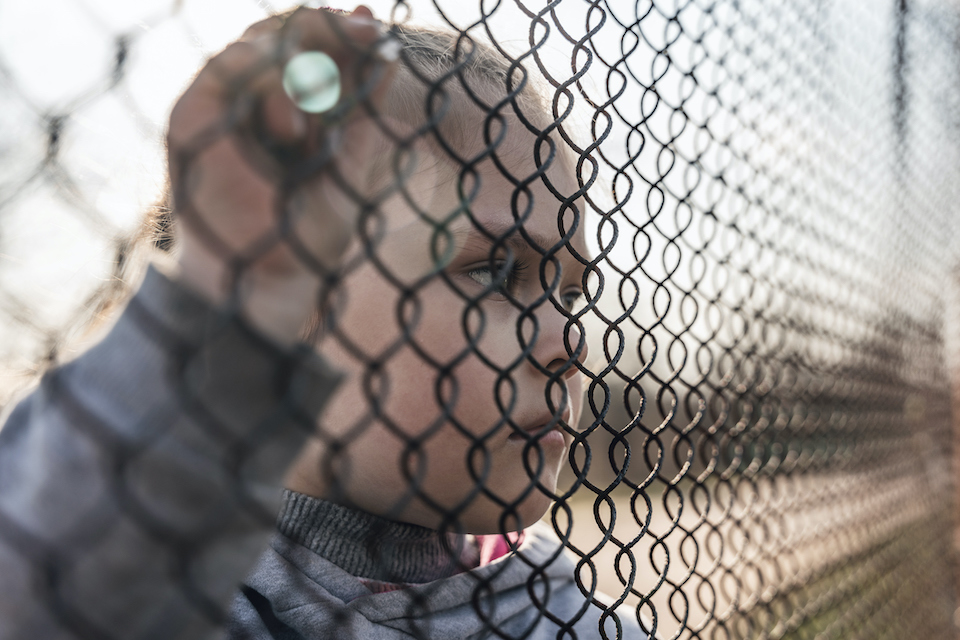Access to food assistance program curbs child maltreatment, study finds
LAWRENCE — The Supplemental Nutrition Assistance Program (SNAP) helps offset the costs for families who face food insecurity. It’s one of the most frequently accessed public programs, aiding more than 43 million people each month. But SNAP also provides an unanticipated benefit: preventing child maltreatment.
 “The social safety net matters,” said Donna Ginther, Roy A. Roberts Distinguished Professor of Economics at the University of Kansas. “And having access to the social safety net has an effect on child abuse.”
“The social safety net matters,” said Donna Ginther, Roy A. Roberts Distinguished Professor of Economics at the University of Kansas. “And having access to the social safety net has an effect on child abuse.”
Her new study, titled “Association Between State Supplemental Nutrition Assistance Program Policies, Child Protective Services Involvement, and Foster Care in the US, 2004-2016,” found that states with more generous SNAP policies had fewer children involved in child protective services (CPS) and sent to foster care. It appears in the journal JAMA Network Open.
“We’ve seen a doubling of child poverty between 2000 and 2016 here in Kansas and the United States. It started coming down a little bit but went back up during the pandemic. With so many children in low-income households, poverty is what typically gets people more engaged with child protective services,” she said.
 Co-written with KU’s Patricia Oslund, Lindsay Jorgenson and Patricia Sattler, Michelle Johnson-Motoyama (formerly of KU), Rebecca Phillips, Oliver Beer and Starr Davis of Ohio State University and Yoonzie Chung of University of Maryland, this study included data from all 50 states and the District of Columbia. It was funded by a 2016 grant from the Centers for Disease Control and Prevention.
Co-written with KU’s Patricia Oslund, Lindsay Jorgenson and Patricia Sattler, Michelle Johnson-Motoyama (formerly of KU), Rebecca Phillips, Oliver Beer and Starr Davis of Ohio State University and Yoonzie Chung of University of Maryland, this study included data from all 50 states and the District of Columbia. It was funded by a 2016 grant from the Centers for Disease Control and Prevention.
“People don’t fully understand that there is such a high amount of food insecurity,” Ginther said. “It’s exacerbated by the fact that states often tax food. If a state reduces or eliminates the food sales tax, it reduces food insecurity. Giving access to SNAP also reduces food insecurity. Low-income families are living at the margin, so each dollar counts in terms of whether or not they’re well fed and having all their basic needs met.”
Ginther’s research found that an increase in access to SNAP benefits (which replaced the Food Stamp Program in 2008) may reduce CPS and foster care caseloads between 8 to 14 percent. In Kansas, for example, that equates to around 360 fewer children per year relying on foster care.
But despite these benefits, party politics often get in the way of policies.
“There are some people who believe that any subsidy creates dependence,” Ginther said.
She noted how most individuals in society get subsidized in various ways. The mortgage interest deduction is a huge subsidy to the middle class. Wealthy people earn corporate tax breaks that are essentially large government subsidies.
Even when low-income benefits are put in place, the process to collect them is often complex and convoluted, Ginther said.
“Before Governor Kelly came into office, the Kansas application for SNAP benefits was 21 pages long,” she said. “And that’s just an administrative barrier. Other barriers include counting child support as income. As I said, each dollar of additional income matters greatly to these households.”
Some of these barriers can be traced to the Farm Bill of 1996, which granted states more discretion over controlling access to food benefits. (Although the federal government funds such programs, states administer who can receive them.) Some states embraced the change to make it easier for families to receive SNAP, while others made the process more difficult.
“We used the changes in those state policies to look at the effect of more generous access versus less generous access,” she said. “In some states, if a household has more than one vehicle, the value of the second vehicle may disqualify them from receiving SNAP benefits. But certain states recognize that you might need two cars to get to work and do not count them as assets. When states are more generous in how they count assets and income, then we see there are fewer reports, fewer victims and fewer children in foster care.”
Now approaching her 20th year at KU, Ginther specializes in labor economics. She is also the director of the Institute for Policy & Social Research, an interdisciplinary campus center for faculty and students doing funded work in the social and behavioral sciences.
Interestingly, Ginther’s own father was a foster child who spent nine years in the system.
“Previous researchers have shown that if you give people a social safety net when they’re children, then in the long run, those kids do better,” Ginther said. “They get more education and are more likely to work and be productive members of society. So you can think of the SNAP program as an investment in the future.”
Right photo: Child looking through fence. Credit: iStock.